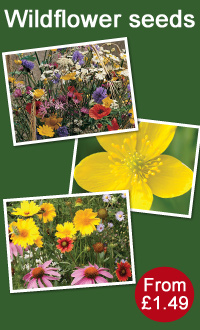
Birds
Birds are among the most welcome garden visitors. Not only are they interesting to watch, they eat aphids, caterpillars, slugs and other grubs, keeping the pest population under control. Over the last half century many common garden birds have declined, with some such as house sparrows, starlings and song thrushes suffering major declines; so much so they have been placed on the RSPB's red list as a conservation priority. Read on to discover how to attract birds to your garden and help your local wildlife.
Feeding
Birds eat a variety of foods in the wild, including seeds, berries, worms, spiders and various insects. You can help feed birds naturally in your garden by planting shrubs with autumn fruits and berries such as crab apple, hawthorn, holly, pyracantha and wild roses (Rosa canina and Rosa rugosa), and seed plants such as sunflowers and teasel. For more plants for birds see our 'Plants for wildlife' guide. You can also help birds by putting out extra food throughout the year, particularly in the summer when they are rearing their young, and in the harsh winter months when natural food sources are low.
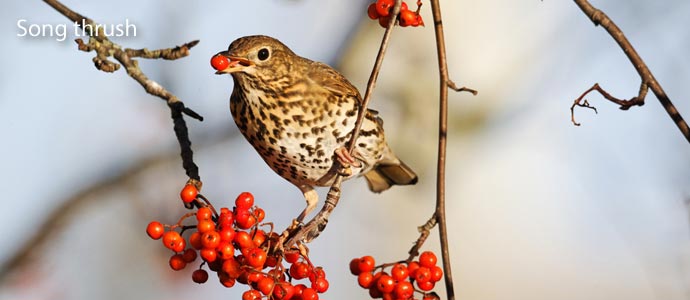
Spring and summer feeding
In the spring and summer avoid putting out whole peanuts, bread or fat as these can choke nestlings. Use good quality seed mixtures designed for wild birds cheap mixes often contain lots of filler ingredients and are unlikely to be as beneficial. If youre concerned about seed mixes leaving a mess on your lawn try special mess-free mixtures which have had the husks and shells removed. Other scraps which can be left out on bird tables include uncooked porridge oats, cooked rice, soaked raisins, sultanas or currants, mild grated cheese, soft chunks of apples, pears or bananas, and mealworms or waxworms.
Autumn and winter feeding
In the autumn and winter its important to put out both food and water for birds. Choose foods with a high fat content such as suet-based fat balls, to help birds maintain their fat reserves and survive frosty weather. Avoid using fats left over from cooking as they are a breeding ground for bacteria and can be too salty.
Encourage insects
Try and be patient with garden pests as they are a food source for many birds. Avoid using pesticides such as slug pellets, and work towards a wildlife friendly garden. Areas of dead wood or leaves will encourage worms, spiders and various insects for birds. Leaving your lawn slightly longer than usual will help keep the soil moist in hot weather, encouraging worms to stay nearer the surface. You can find out more about creating a wildlife garden here.
Water
Birds need water for drinking and bathing. You can attract birds into your garden by installing a bird bath. Any kind of shallow, rough-textured dish is suitable and water should be at a depth of between 2.5-10cm (1-4"). Ideally you should clean your bird bath every week or so with a dilute household disinfectant to prevent diseases. Make sure the container is rinsed thoroughly afterwards. In the winter months remember to melt the ice in bird baths with hot water so that our feathered friends have a reliable water source. Alternatively try floating a lightweight ball in the water to keep a small amount of water ice-free.
Shelter
Plants can be used to provide shelter or nesting sites for birds, protecting them from cats and other predators. Trees, shrubs and hedges are excellent ways to encourage birds into the garden and by choosing a few evergreens you will ensure there is shelter all year round. Plants with fruit or berries are an added bonus. For a list of native and non-native plants which provide berries and fruit for birds take a look at our 'Native v non-native plants' article.
Nest boxes
If you lack suitable natural breeding sites in your garden a bird box can provide welcome refuge. Birds will breed in your garden if they feel the area will provide enough natural food for them and their young during this busy period. Nest boxes should be placed at least 2 metres off the ground and away from overhanging branches to deter cats. Position boxes so they face north-east or south-east to avoid strong sunlight and south-westerly winds. You can find out more about building and maintaining nest boxes on the RSPB website.
Nature lover? You'll find more wildlife articles and quick links to pollinator-friendly plants over on our gardening for wildlife hub page.
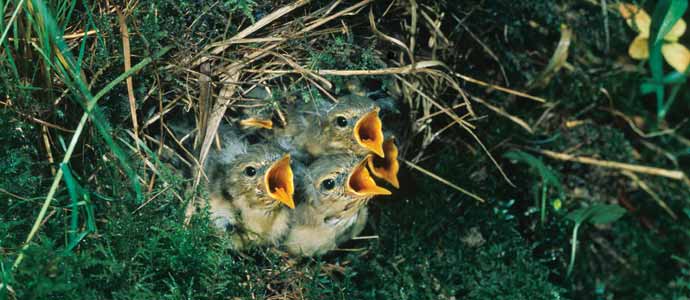
Quick Links:
- Plants for wildlife
- Wildlife gardening
- 'How to' Gardening Guides
- Gardening for beginners
- Wild Birdfood
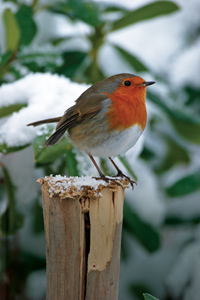
Over the last half century many of our common garden birds have declined. Song thrushes, house sparrows and starlings are particularly threatened and have been placed on the RSPB's red list as a conservation priority.
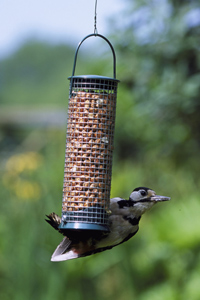
Hang bird feeders away from the reach of cats, either in prickly bushes or on the end of thin twigs away from fences.
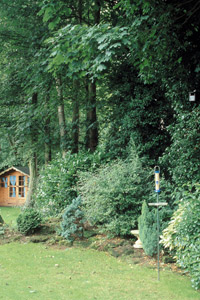
Trees, shrubs and hedges provide shelter and nesting sites for birds, making your garden more welcoming.
Sign Up For Exclusive Special Offers




© 2024 Thompson & Morgan. All rights reserved. A division of Branded Garden Products Limited.

